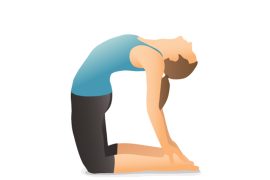Lunges can be a challenging but highly effective lower body exercise. Proper technique and form are essential for maximizing their benefits and avoiding injury. Trainer Urmi Kothari from Kinetic Living Movement School offers some valuable tips to ace lunges and enhance their effectiveness.
Firstly, maintaining proper alignment is crucial. Begin with your feet hip-width apart, engage your core, and keep good posture throughout the exercise. For a forward lunge, step one leg forward while keeping your chest up and back straight. Bend both knees to create 90-degree angles, ensuring that your front knee is directly above your ankle, and your back knee hovers just above the ground. The same principles apply to reverse lunges, where you step backward instead of forward.
To increase the difficulty of lunges without adding weight, consider incorporating walking lunges. This dynamic variation challenges balance and stability as you move forward with each step, engaging different muscle groups and intensifying the workout.
Functional lunges incorporate several elements that make them highly effective in improving overall fitness:
- Balance with Weight Overhead: Adding weight overhead, such as holding a dumbbell or kettlebell, challenges your balance and stability. This variation engages your core muscles and forces you to maintain control throughout the movement, enhancing functional strength.
- Spatial Awareness: Performing lunges requires spatial awareness, which means being aware of how your body moves in relation to the space around you. This is essential for maintaining proper form and preventing injuries. It also improves your proprioception, or your body’s sense of its position in space.
- Mind-to-Muscle Connection: Lunges can help increase your mind-to-muscle connection, which is the ability to consciously activate and engage specific muscle groups during exercises. This heightened awareness allows you to perform lunges with better control and precision.
To perform a lunge properly, follow these steps:
- Stand with Proper Alignment: Begin by standing with your feet hip-width apart. This provides a stable base for the lunge.
- Step Forward: Take a controlled step forward with one leg, ensuring that your knee aligns with the second toe of your front foot. The other foot remains stationary.
- Lower Your Body: Lower your body by bending both knees until your front thigh is parallel to the ground. Your back knee should be bent at a 90-degree angle. It’s crucial to prevent your front knee from going past your toes to avoid strain on the knee joint.
- Maintain Good Posture: Keep your back straight and your core engaged throughout the movement. Avoid leaning forward or arching your back excessively.
- Push Back Up: Push through your front heel to return to the starting position. Exhale as you rise.
- Repeat on the Other Side: After completing the desired number of repetitions on one side, switch to the other leg and repeat the lunge.
Common Mistakes to Avoid When Doing Lunges:
- Allowing the front knee to extend beyond the toes, which can strain the knee joint.
- Leaning too far forward, which can disrupt balance and posture.
- Failing to engage the core muscles, leading to instability and potential lower back strain.
Tips for doing lunges safely and effectively:
- Start with a weight that is challenging but not too heavy.
- Focus on form over weight.
- Do not do lunges if you have any knee pain.
By following proper lunge technique and being mindful of these common mistakes, you can perform lunges effectively and safely, reaping the functional benefits they offer for overall fitness and functional strength.
Disclaimer:
The information contained in this article is for educational and informational purposes only and is not intended as a health advice. We would ask you to consult a qualified professional or medical expert to gain additional knowledge before you choose to consume any product or perform any exercise.








